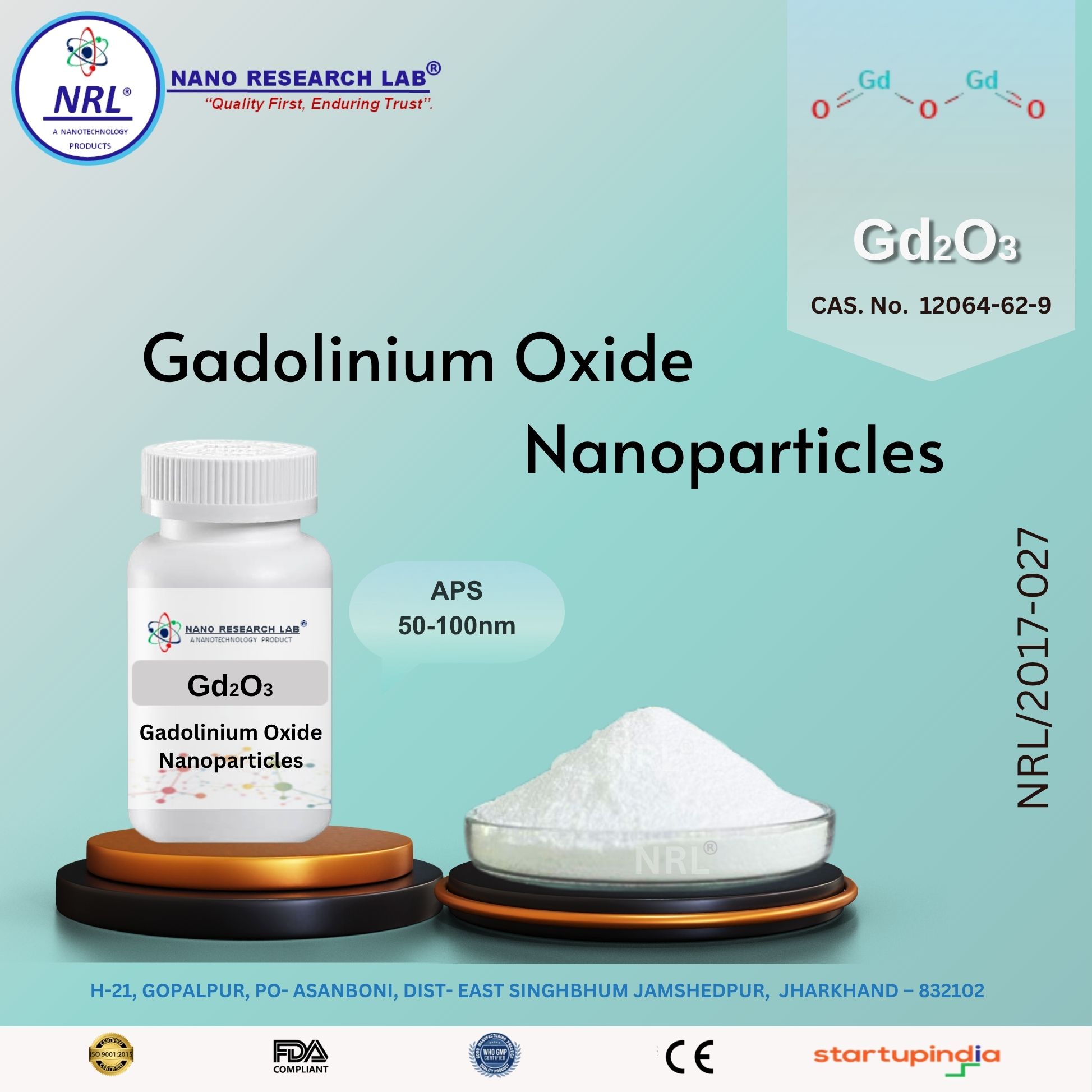
Gadolinium Oxide Nanoparticles/Nanopowder (Gd2O3, 50-100nm, purity 99.5%)
₹1475.00
🧪 Gadolinium Oxide Nanoparticles / Nanopowder (Gd₂O₃)
Particle Size: 50–100 nm
Purity: 99.5%
⚙️ Technical Specifications
Property | Specification |
|---|---|
Material Name | Gadolinium Oxide Nanoparticles |
Chemical Formula | Gd₂O₃ |
Purity | 99.5% |
Particle Size | 50–100 nm |
Appearance / Color | White to pale yellow fine powder |
Crystal Structure | Cubic / Hexagonal (C-type rare-earth oxide) |
Surface Area | High nanoscale surface area |
Density | ~7.41 g/cm³ |
Melting Point | 2,400 °C |
Boiling Point | 3,200 °C |
Solubility | Insoluble in water, soluble in acids |
Storage Conditions | Store in dry, airtight container, away from moisture, acids, and bases |
🌟 Key Features
High-purity (99.5%) Gd₂O₃ nanoparticles
Nanoscale size (50–100 nm) for high surface area and reactivity
Excellent thermal, chemical, and magnetic stability
White/pale yellow powder, easy to handle and process
Suitable for high-tech, optical, magnetic, and biomedical applications
🔬 Applications (Detailed)
Magnetic Materials & MRI Contrast Agents
Gadolinium oxide nanoparticles are widely used as contrast agents in MRI due to high paramagnetic properties.
Incorporated into magnetic nanocomposites and high-performance magnetic materials.
Enhances magnetic stability and sensitivity in sensors and imaging devices.
Optics & Photonics
Used in optical materials, phosphors, and luminescent applications.
Suitable for lasers, upconversion nanoparticles, and luminescent devices.
Ceramics & Glass
Applied in specialty ceramics and glasses for improved thermal and optical properties.
Enhances mechanical strength and transparency of optical ceramics.
Electronics & Semiconductors
Incorporated in sensors, thin films, and solid-state devices for improved performance.
Used in optoelectronic devices, dielectric materials, and advanced electronic components.
Energy & Research Applications
Suitable for photocatalysis, energy storage, and nanomaterial research.
Enables synthesis of functional nanocomposites and hybrid materials.
Used in experimental research in biomedicine, photonics, and material science.
Biomedical Applications (Experimental)
Potential use in targeted drug delivery, bioimaging, and contrast enhancement in research.
Can be functionalized for advanced biomedical applications due to high surface reactivity and paramagnetic properties.
⚠️ Handling & Storage
Store in a cool, dry, airtight container, away from moisture, acids, and bases
Handle with gloves, protective eyewear, and lab coat
Avoid inhalation of fine powder; use in well-ventilated areas or fume hood
Prevent contamination with other chemicals or metals
